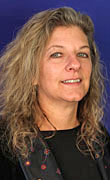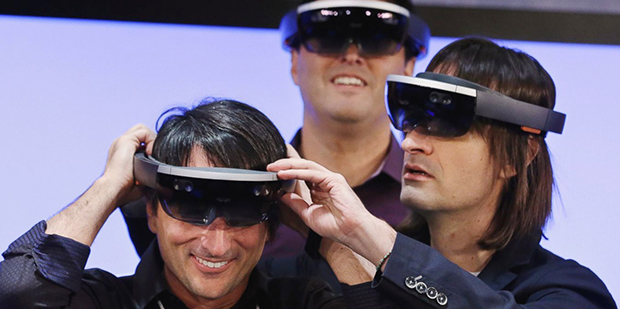Viz profs' visor software could enhance human sight, hearing

Carol LaFayette

Fred Parke
The ability to see and hear beyond the spectrum of human sensitivity could be granted to those who don a Microsoft visor equipped with new software created by Carol LaFayette and Frederick Parke, [visualization] (http://viz.arch.tamu.edu/) faculty members at Texas A&M University.
LaFayette and Parke are using a $100,000 grant from Microsoft to develop software for the company’s new [HoloLens] (https://www.microsoft.com/microsoft-hololens/en-us) , a wireless visor equipped with a computer that renders high-definition holograms and stereo audio.
Theirs is one of 10 HoloLens projects funded by Microsoft from a variety of proposals to create apps for art, medicine, education, and many more uses.
In their proposal, LaFayette and Parke detail plans to harness the HoloLens’ location and orientation tracking sensors, computer-generated image overlays, audio output and computational power to enable humans to see ultraviolet light — part of the electromagnetic spectrum invisible to the naked eye — and hear ultrasonic sound, commonly used for communications and navigation by bats, dolphins and other animal species.
The ability to see light and sounds beyond people’s sensory ranges has a variety of potential applications, said LaFayette. Law enforcement officers could benefit from the additional tactical and situational awareness that enhanced perception provides, and wildlife centers could use the visors to provide help visitors experience the world as animals with extended sensory ranges do.
The HoloLens’ capabilities, said LaFayette, could eventually include the detection of additional light sources, such as infrared waves, that are undetectable to humans.
“Ultimately, we envision a real-time, wearable extended sensory apparatus for use by a broad audience across a wide geographic scale,” said LaFayette, who has previously created a [virtual environment] (http://archcomm.arch.tamu.edu/archive/news/fall2009/stories/viz_animalvision.html) that allows humans to experience ultraviolet and ultrasonic sounds heard by animals.
Tags
Related Posts

Study eyes how STEM activities influence kids

Viz prof to learn if storytelling aids science learning

Teacher 'making’ workshop fosters STEM education

Oct. 23 symposium spotlighted college, faculty research
Follow Us
Facebook Twitter Vimeo Youtube Flickr RSS
Recent Posts

Planning prof heads study of disaster housing aid

A message from the dean

Former student remembered as expert planner

Leading educator named new head of Architecture Dept.






_thumbnail_small.png)
